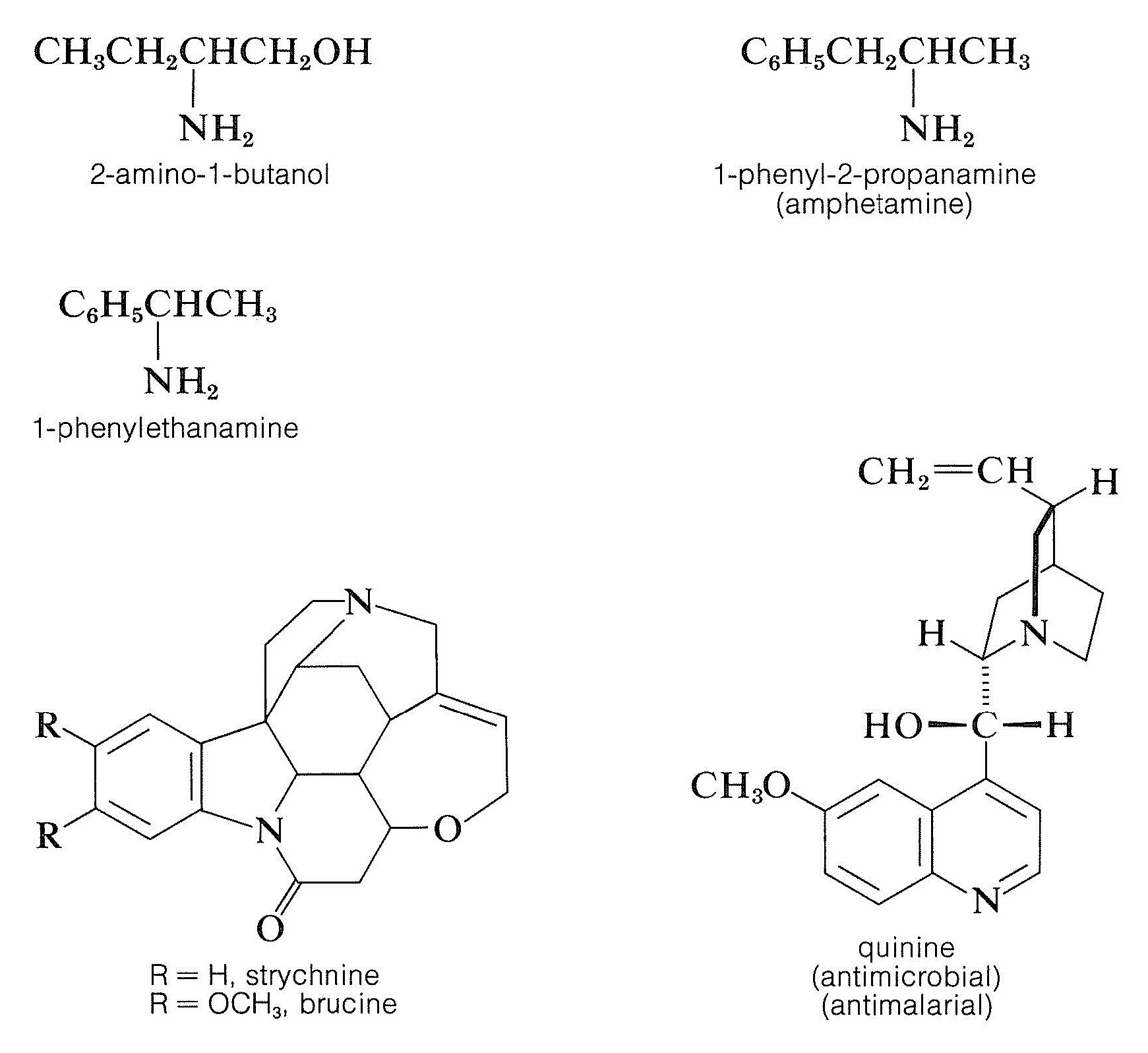
Chiral Amines as Resolving Agents and Resolution of Racemic Acids
 المؤلف:
..................
المؤلف:
..................
 المصدر:
LibreTexts Project
المصدر:
LibreTexts Project
 الجزء والصفحة:
.................
الجزء والصفحة:
.................
 7-7-2019
7-7-2019
 1952
1952
Chiral Amines as Resolving Agents and Resolution of Racemic Acids
The most commonly used procedure for separating enantiomers is to convert them to a mixture of diastereomers that will have different physical properties: melting point, boiling point, solubility, and so on . For example, if you have a racemic or D,L mixture of enantiomers of an acid and convert this to a salt with a chiral base having the D configuration, the salt will be a mixture of two diastereomers, (D acid . D base) and (L acid . D base). These diastereomeric salts are not identical and they are not mirror images. Therefore they will differ to some degree in their physical properties, and a separation by physical methods, such as crystallization, may be possible. If the diastereomeric salts can be completely separated, the acid regenerated from each salt will be either exclusively the D or the L enantiomer:

Resolution of chiral acids through the formation of diastereomeric salts requires adequate supplies of suitable chiral bases. Brucine, strychnine, and quinine frequently are used for this purpose because they are readily available, naturally occurring chiral bases. Simpler amines of synthetic origin, such as 2-amino- 1 -butanol, amphetamine, and 1 -phenylethanamine, also can be used, but first they must be resolved themselves.

 الاكثر قراءة في الهايدروكاربونات
الاكثر قراءة في الهايدروكاربونات
 اخر الاخبار
اخر الاخبار
اخبار العتبة العباسية المقدسة


